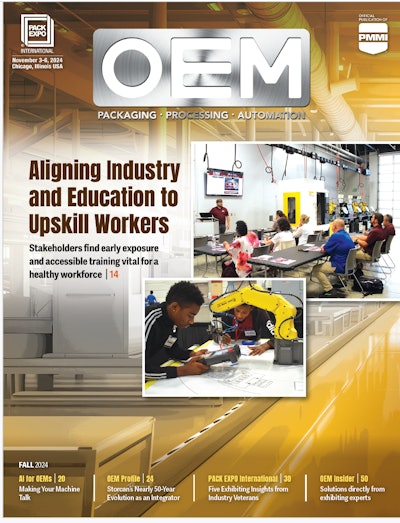
Much has been said about the “wild-west” status of the relatively new cannabis market, and manufacturers – with the help of OEMs - are by necessity pioneering new standards, new machinery adaptations, and regulations for packaging requirements.
The cannabis industry is predicting growth in food and beverage, health and wellness, cosmetics, skin care & topicals, pet supplements and pharmaceuticals. Recreational growth is expected to quickly outpace medical, and the regulatory landscapes for both CBD and THC are expected to continue to become more relaxed, especially restrictions on retail CBD. As public support for the cannabis industry - particularly CBD use - continues to increase, it is expected that in the next decade some form of cannabis will be a part of many consumers’ daily routines, either as a functional ingredient in foods, beverages, and beauty products, or as a wellness mood enhancer in health.
PMMI Business Intelligence’s new white paper, “Cannabis Market Update: Unique Packaging Challenges for THC and CBD Products,” mentions several challenges faced by cannabis companies. Sorting through the wide variety of packaging options that are available and meeting labeling regulations as they pertain to each state where cannabis is legal is one hurdle. But designing and adapting processes and machines to work in the cannabis market is also a challenge. As the report says, “Cannabis packaging companies must forge new ground and innovate new solutions for an industry where few shared standards for packaging exist.”
Cannabis packaging companies have a mixture of automated, semi-automated, and manual processes when it comes to machinery. Some larger operations have fully automated processes for applications such as labeling, primary packaging, and secondary packaging, but the majority of packagers employ a combination of manual and semi-automated packaging solutions. Labor-intensive tasks such as manually placing flower into jars and hand-labeling are slowly being replaced by automation and machines, but many packagers still rely on manual labor for these processes.
Also, cannabis companies often do not know what automation and machine solutions are available to them and are looking for OEMs to provide suggestions and solutions that packagers may not even be aware of. “We would expect machine builders to be part of our team, visit our facility to understand our needs, and offer recommendations and improvements to our operations,” said one Senior Pharmaceutical Process Engineer at a medical cannabis products company.
Labelers are often one of the first processes to be automated at cannabis packaging companies, since they are affordable, compact, and make a measurable impact on output speed for their capital investment. “We are mostly manual now and plan to automate starting with small labelers and add more as we grow,” said another Manager at a medical cannabis company.
















